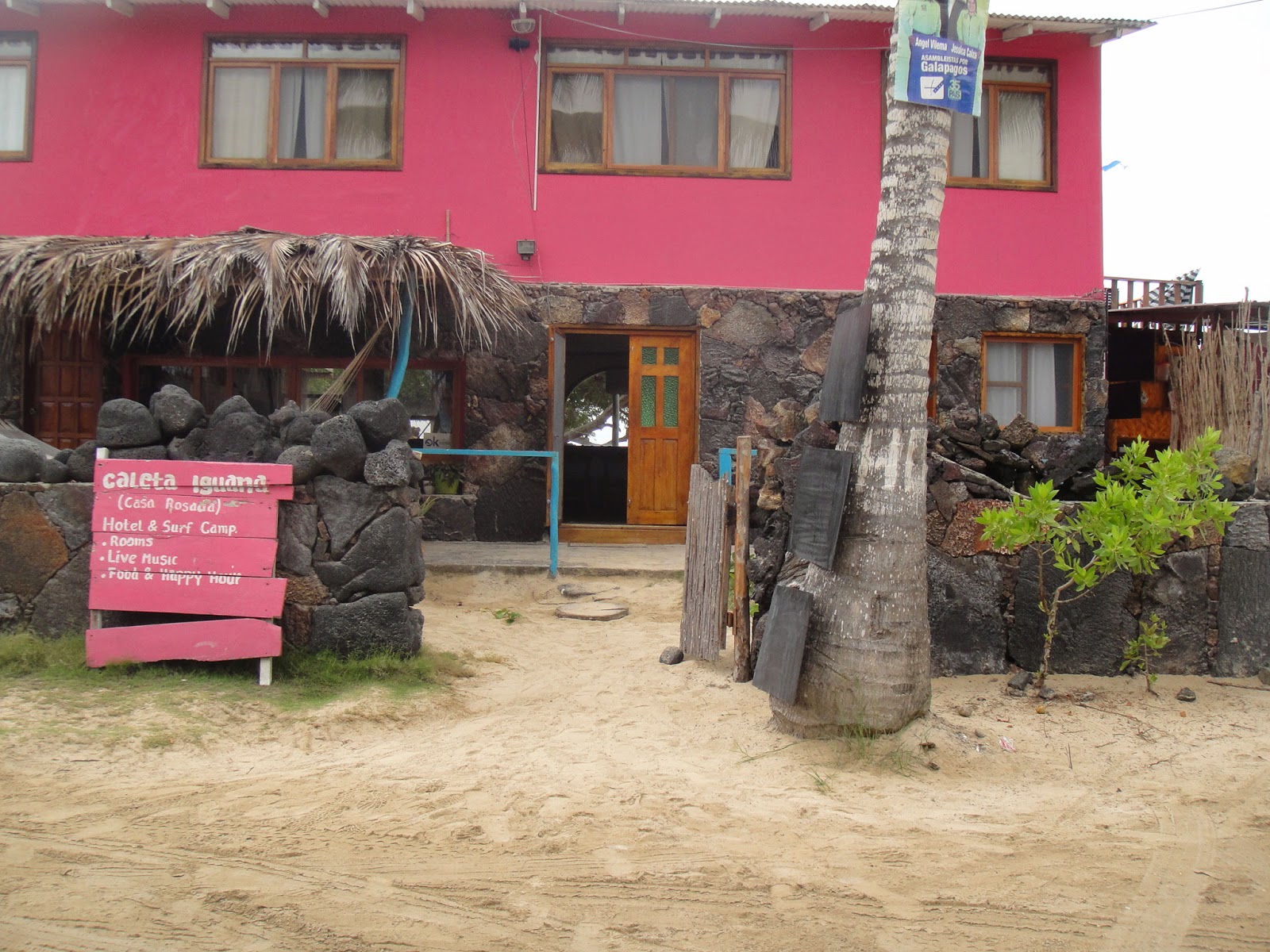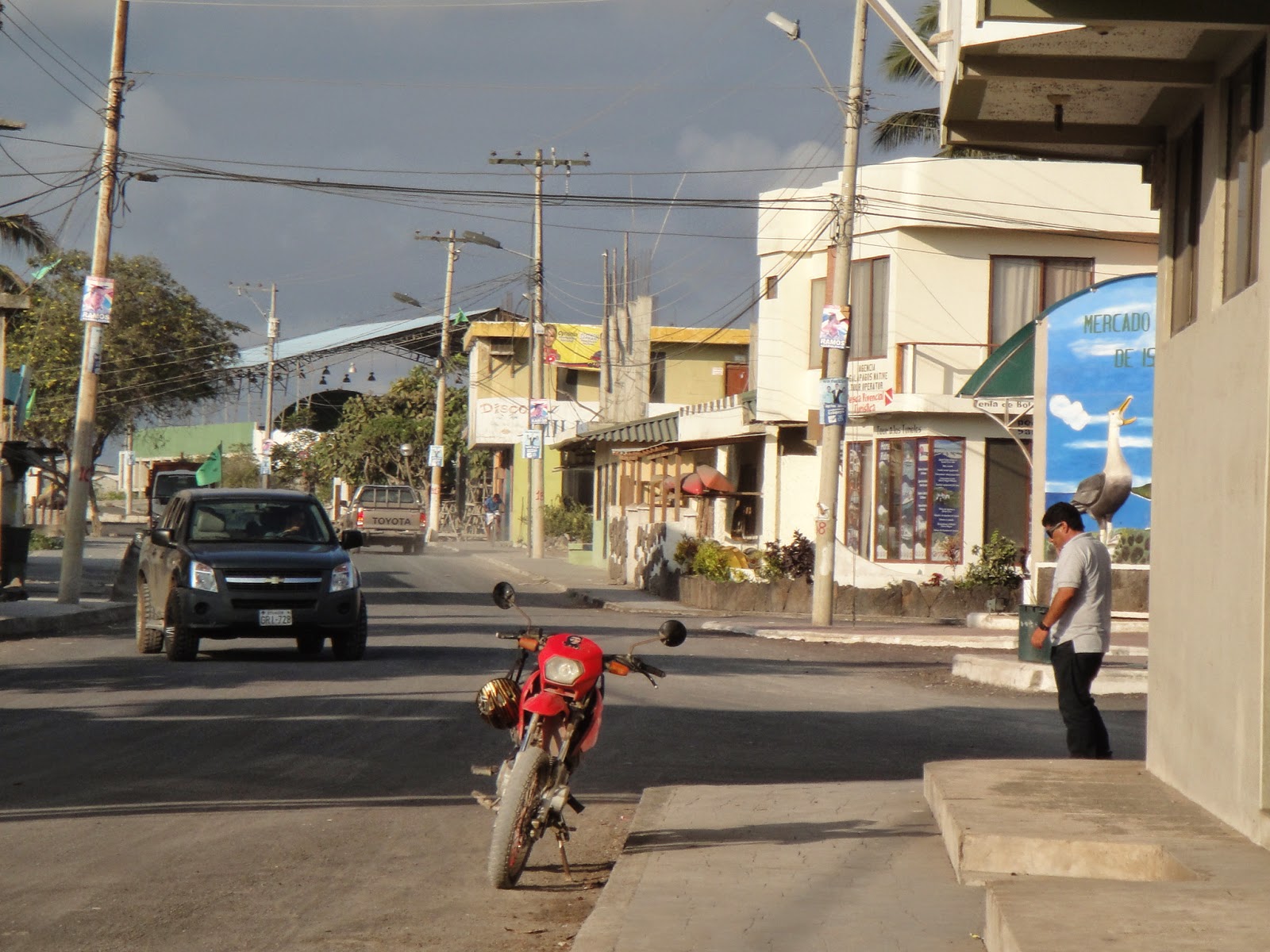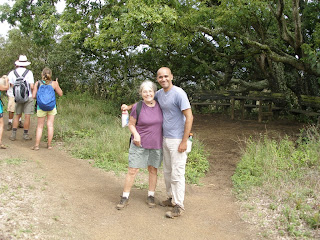Today is our last day in Isabela. We bought our boat tickets to Santa Cruz for tomorrow. Our lodging was named for Marine Iguanas and we will show you why on a tour of Caleda Iguana. It is surrounded by a small stone fence. An excellent sunning spot.
They were everywhere.
 |
| Outside Dinning Area |
Dinning Area
 |
| Iguana's in the dinning Area |
 |
View toward west beach |
We met a girl Wednesday night from So. Africa who is teaching in the day care center in town. We arranged to meet her today to give her the school supplies we had brought with us to donate to the school. She gave us a tour of the day care center and we had the opportunity to meet the little kids there.
We spent the rest of the day relaxing, swimming and getting ready to leave. We paid our hotel bill and give crayons and pencils to the women who worked at Caleta Iguana for their children.
We met a man from Wisconsin who was a retired college business teacher. We ended up eating supper with him later on in the evening. We will be riding together back to Santa Cruz.
 |
| The friendly bar at Caleta Iguana |
Lending a helping hand at the bar.
A great end to our time on Isla Isabela.
A great end to our time on Isla Isabela.


















































